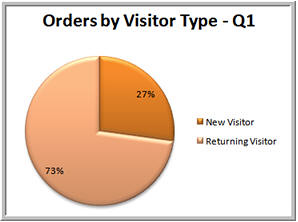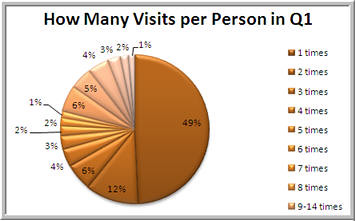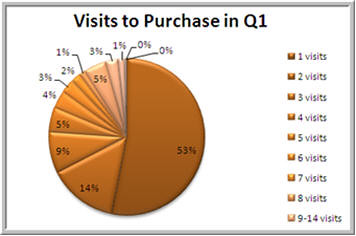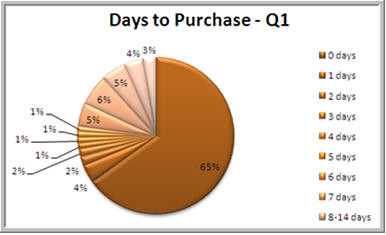Purchase latency is the time that passes from when a customer first visits a website to when they eventually make a purchase. Knowing your website’s latency period helps a marketer answer a few tough questions:
· How many visits, and how much time, elapses before customers make a purchase?
· Should you invest more in acquiring new customers or in generating additional value from existing customers?
· How long before you can measure ROI on media investments?
· Do different visitor segments respond differently to advertisements?
· How long should I test copy or landing pages?
· How do I assign credit for a sale (introduction to site or visit of the purchase)?
The first step is to find the average latency period for the website. As all online marketing should be tagged with campaign tracking codes from your web analytics (WA) program, WA is exactly where to start. Use the website average as directional and segment deeper for the traffic in question. Although each WA program has different names for the reports, here are a few examples and a quick analysis:
1. New vs. Returning Visitors – who is coming to the site and who ends up purchasing? Based on these reports, we see evidence of latency with 51% of visitors being new but 73% of purchases coming from returning visitors:

2. Loyalty – How often do folks visit on average? How does this differ from purchasers? In the charts below, 49% of visitors only saw the site once (consider cookie deletion). The good news is that 53% of purchases were from this visitor type. That said, a large chunk of buyers don’t convert until visit 4 or 5. Based on your accuracy goals, you’ll probably want to wait until at least 80% of visitors have purchased before judging ROI success.

3. Time Passed Since Previous Visit – The chart on the left supports the previous slide that most visitors visit only once. For those folks who do return, it’s important to note that there is a significant portion of visitors who wait 2-4 weeks before they return. In terms of purchases, 65% happened on the same day of their first visit (note, there can be multiple visits in a day), and 77% happened in the first week. Although some may be repeat purchases (another report available in WA tools), 11% of purchases happened >30 days after the initial visit.

Determining the average purchase latency window depends on the level of accuracy desired. In the above example, I’ll capture 80% of purchasers within 14 days or 93% in 60 days – how confident do I need to be before I measure ROI or establish an A/B test winner? It’s situational dependant. If you want to be more technical in determining statistical significance or confidence intervals, there are calculators out there. Further, I urge you to segment your traffic – visitors from Search typically have a much different latency period than visitors from display. Finally, what’s the point of gaining these insights from the data if you don’t take any action to shorten it, re-target during, personalize return visits, incorporate it into test durations, etc.? Data leads to insights which lead to actions – don’t stop halfway.
Posted by: Jeff Campbell, VP Product Development & Innovation
How to Determine Purchase Latency
Thursday, May 1, 2008
EMAIL TO FRIEND Labels:
Jeff Campbell,
Search Strategy
Labels:
Jeff Campbell,
Search Strategy
Posted by Resolution Media at 1:16 PM


0 comments:
Post a Comment